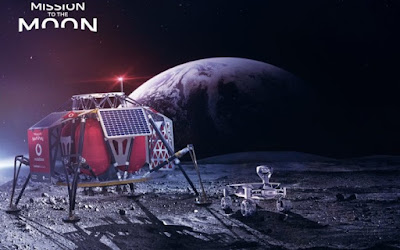According to the "Daily Mail", Vodafone said it has reached a cooperation with Nokia for the development of space network to provide technical support. The hardware used to implement the space network is small and weighs less than a bag of sugar. The project will connect two Audi lunar rover and one automatic landing and navigation module (ALINA) base station.
The two Audi lunar rover will study lunar rover that NASA Apollo 17 mission left behind, scanning and condition assessment, such as intense radiation, extreme temperatures and damage caused by small meteorites. The 4G network on the Moon will allow them to send scientific data and high-definition video to Earth. The researchers said the two vehicles were transmitting live high-resolution pictures to Earth 200 meters (656 feet) away from the lunar rover.
Vodafone said the two companies are working with PTScientists in Berlin on the project and plan to launch the SpaceX Falcon 9 in Cape Canaveral in 2019. Hannes Ametsreiter, chief executive of Vodafone, said: "This project will adopt a very innovative approach to developing mobile network infrastructure." An informed executive pointed out that as the 5G network is still in the testing phase, stability on the moon was not guaranteed and was not used.
Last year, Audi said it would place a private lunar lander with two Audi lunar rover on the surface of the moon. Audi hopes this cost-conscious project will eventually commercialize the Moon. The engineering team that developed the lunar rover said that Audi has helped to perfect the 3D printing technology that makes lunar rover. The raw materials(3D Printer Accessories) used in the printing process are titanium and aluminum.
The project plans to send a lunar rover to the moon's surface at Cape Canaveral in 2019 for the SpaceX Falcon 9 rocket. The lunar rover contains two Audi lunar rover. Launch fee is about 130 million US dollars. In contrast, the average cost of NASA space shuttle 450 million US dollars.

No comments:
Post a Comment